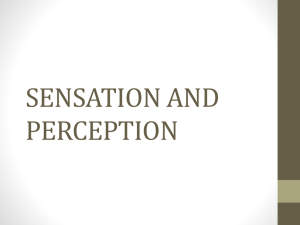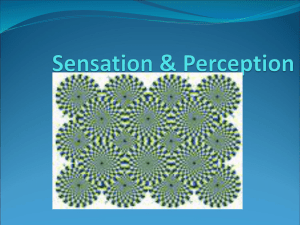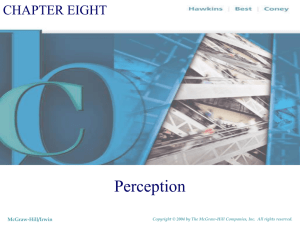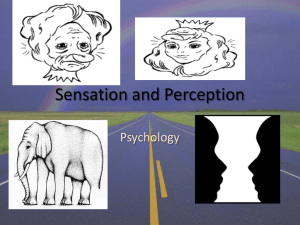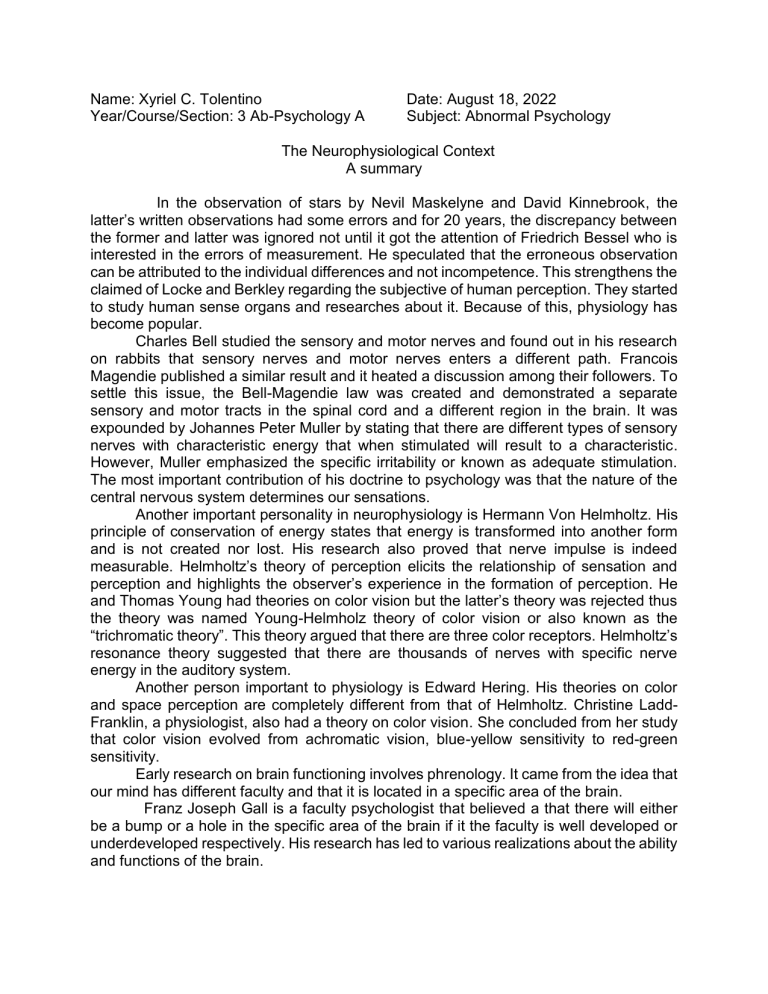
Name: Xyriel C. Tolentino Year/Course/Section: 3 Ab-Psychology A Date: August 18, 2022 Subject: Abnormal Psychology The Neurophysiological Context A summary In the observation of stars by Nevil Maskelyne and David Kinnebrook, the latter’s written observations had some errors and for 20 years, the discrepancy between the former and latter was ignored not until it got the attention of Friedrich Bessel who is interested in the errors of measurement. He speculated that the erroneous observation can be attributed to the individual differences and not incompetence. This strengthens the claimed of Locke and Berkley regarding the subjective of human perception. They started to study human sense organs and researches about it. Because of this, physiology has become popular. Charles Bell studied the sensory and motor nerves and found out in his research on rabbits that sensory nerves and motor nerves enters a different path. Francois Magendie published a similar result and it heated a discussion among their followers. To settle this issue, the Bell-Magendie law was created and demonstrated a separate sensory and motor tracts in the spinal cord and a different region in the brain. It was expounded by Johannes Peter Muller by stating that there are different types of sensory nerves with characteristic energy that when stimulated will result to a characteristic. However, Muller emphasized the specific irritability or known as adequate stimulation. The most important contribution of his doctrine to psychology was that the nature of the central nervous system determines our sensations. Another important personality in neurophysiology is Hermann Von Helmholtz. His principle of conservation of energy states that energy is transformed into another form and is not created nor lost. His research also proved that nerve impulse is indeed measurable. Helmholtz’s theory of perception elicits the relationship of sensation and perception and highlights the observer’s experience in the formation of perception. He and Thomas Young had theories on color vision but the latter’s theory was rejected thus the theory was named Young-Helmholz theory of color vision or also known as the “trichromatic theory”. This theory argued that there are three color receptors. Helmholtz’s resonance theory suggested that there are thousands of nerves with specific nerve energy in the auditory system. Another person important to physiology is Edward Hering. His theories on color and space perception are completely different from that of Helmholtz. Christine LaddFranklin, a physiologist, also had a theory on color vision. She concluded from her study that color vision evolved from achromatic vision, blue-yellow sensitivity to red-green sensitivity. Early research on brain functioning involves phrenology. It came from the idea that our mind has different faculty and that it is located in a specific area of the brain. Franz Joseph Gall is a faculty psychologist that believed a that there will either be a bump or a hole in the specific area of the brain if it the faculty is well developed or underdeveloped respectively. His research has led to various realizations about the ability and functions of the brain. Phrenology was coined by Thomas Foster and popularized by Johann Kaspar Spurzheim. Not only that, phrenology became popular because of Gall’s reputation; it provides hope for a scientific analysis of the mind, and because it offers a practical information. Pierre Flourens analyzed the brain function through extirpation. In his research, he found out that removing a part of the brain will result to a specific bodily dysfunction. During the mid-19th century, the clinical method and electrical stimulation technique has emerged in brain research. The clinical method was developed by Paul Broca on 1862. It examines the brain to detect damaged areas assumed to be responsible for behavioral conditions before the person died. He is also involved in craniometry and believed that brain size and intelligence is interrelated. Gustav Fritsch and Eduard Hitzig promoted the electrical stimulation technique which they electoral physiology on 1870. It explores the cerebral cortex using weak electrical currents. Their research founds out that a stimulation on cortical areas in rabbits and dogs will cause motor response. David Ferrier refined their work and articulately mapped motor cortex and cortical regions. A summary of his findings is written in “The functions of the Brain (1876)”. The rise of experimental psychology can be trace to Ernest Heinrich Weber and his interest on touch, kinesthesis, and skin and muscle tension. His research has revealed the important role of receptors to the bodily movements. He formulated the just noticeable differences (jnd)- the smallest differences between weights that can be detected. In his weight discrimination experiment, he concluded the influence of internal muscular sensations on the subject’s ability to discriminate. His research is significant as it proved that the physical stimulus and our perception has no direct relationship and it provides a method to investigate the relationship between the stimulus and the resulting sensation. Gustav Theodor Fechner is interested in the properties of electric currents which established his reputation as physicist. He suggested that a systematic relationship between bodily and mental experience could be demonstrated if a person were asked to report changes in sensations as a physical stimulus was systematically varied. He speculated that for mental sensations to change arithmetically, the physical stimulus would have to change geometrically. To study the relationship between physical and psychological events, he invented psychophysics. From this, he states mathematically what Weber had found and labeled it as “Weber’s law”. From a series of mathematical calculations, Fechner arrived his famous formula: S=k log R. This formula states that for sensations to rise arithmetically (the left side of the equation), the magnitude of the physical stimulus must rise geometrically (the right of the equation Fechner borrowed the idea of Weber about the jnd and used it as a unit of sensation. He believed that at lowest intensity, the stimulus can still be detected, which he calls absolute threshold. He also added that there will still be reactions below the intensity level of the absolute threshold, although unconscious, even if the intensity of the stimulus is unreached. To explore the mind-body relationship, Fechner used the method of limits where the magnitude is discretely increased or decreased to determine the sensory threshold. He also used the method of constant stimuli where a subject is presented with a pair of stimuli (the standard and with varying magnitude) and will report whether the variable stimulus appears greater than, less than, or equal to the standard. The last method used was method of adjustment where the average difference between the variable and the stimulus standard is measure.
